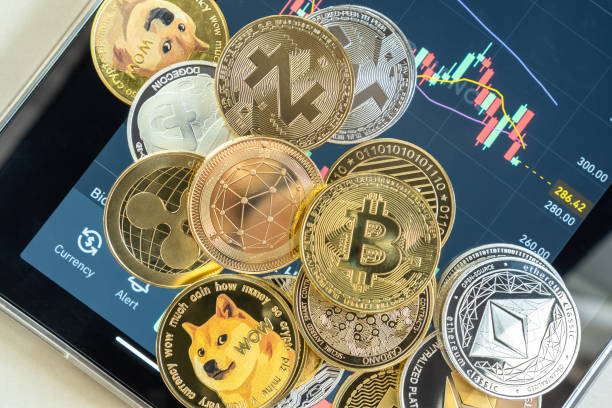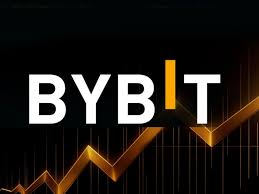
WHAT IS CRYPTOCURRENCY
Okay everyone and their grandma must have heard the term cryptocurrency over the years. It’s one of those things that have been in our faces over the years. But what really is cryptocurrency? Is it really the building block of the future that it has been sold to us over the years? Think of crypto like just another risk asset—basically, it’s a lot like stocks. When investors feel good and are willing to take on risk, both crypto and stocks tend to go up. When fear kicks in—whether it’s because of rising interest rates, economic downturns, or just general uncertainty—both tend to drop.
Sure, crypto has its unique aspects, like decentralization and blockchain tech, but at the end of the day, its price moves are largely driven by the same factors that affect stocks: investor sentiment, liquidity, and macroeconomic trends. If people are in a “risk-on” mood, Bitcoin and Ethereum rally, just like tech stocks. When it’s “risk-off,” they tumble. So while crypto might seem like its own wild world, in many ways, it behaves just like any other speculative asset.
Crypto, like stocks, comes with varying degrees of risk—so it’s not a one-size-fits-all situation. Just like in the stock market, where you have blue-chip stocks like Apple and Microsoft on one end and speculative penny stocks on the other, crypto has its own risk spectrum.
At the lower end of the crypto risk scale, you have Bitcoin and Ethereum—often called “blue-chip” cryptos. They’re still more volatile than the stock market, but they’ve been around long enough to have established a level of trust. For investors looking for returns beyond what stocks offer but without the extreme risks of lesser-known cryptos, these are the safer bets (relatively speaking).
Then you have altcoins, which range from solid projects with real use cases to completely speculative bets. These can swing wildly based on hype, innovation, or even tweets from influential figures.
At the highest end of the risk spectrum, you have meme coins and ultra-low-cap cryptos—the equivalent of penny stocks. These can deliver astronomical gains overnight but can just as easily go to zero in a matter of hours. You might 10x your money, or you might wake up to find your entire investment wiped out.
So, the key is knowing your own risk tolerance. If you’re looking for something with high return potential but more stability, Bitcoin is the way to go. If you’re willing to take on more risk for higher rewards, you might explore altcoins. But if you’re diving into meme coins, be aware that it’s basically gambling—you might hit the jackpot, or you might lose everything in a flash.
HOW DOES CRYPTOCURRENCY TRADING WORK?
Cryptocurrency trading involves buying, selling, and exchanging digital assets on various online platforms known as cryptocurrency exchanges. Unlike traditional stock markets, crypto trading operates 24/7, allowing traders to engage in transactions at any time.
Key Aspects of Cryptocurrency Trading
Cryptocurrency trading can seem complex at first, but one of the fundamental concepts every trader must understand is trading pairs. Whether you’re new to crypto or looking to refine your strategy, knowing how trading pairs work is crucial for making informed decisions.
Trading Pairs
A trading pair in the crypto market represents two assets that can be exchanged directly against each other. For example, when you see BTC/USDT, it means Bitcoin (BTC) can be traded for Tether (USDT), and vice versa. Similarly, ETH/BTC allows traders to swap Ethereum (ETH) for Bitcoin (BTC). The first asset in the pair is known as the base currency, while the second is the quote currency, which determines the price of the base currency. For instance, if BTC/USDT is priced at $60,000, it means 1 BTC = 60,000 USDT. If ETH/BTC is priced at 0.06, it means 1 ETH = 0.06 BTC.
There are three main types of trading pairs. Crypto-to-fiat pairs involve a cryptocurrency and a traditional currency, such as BTC/USD or ETH/EUR. These pairs are commonly found on exchanges that allow fiat deposits. Crypto-to-stablecoin pairs include assets like USDT, USDC, and BUSD, which are pegged to fiat currencies, providing a less volatile trading option. Examples include BTC/USDT and ETH/USDC. Lastly, crypto-to-crypto pairs allow traders to swap one digital asset for another, such as ETH/BTC or SOL/ADA, without converting to fiat.
When choosing a trading pair, factors such as liquidity, trading fees, market trends, and exchange availability should be considered. Higher liquidity ensures smoother trades with minimal price fluctuations, while lower fees can help maximize profits. Additionally, not all trading pairs are available on every exchange, so it’s essential to check where your desired pair is listed.
Understanding trading pairs is key to navigating the crypto market efficiently. Whether you’re trading Bitcoin against USDT or swapping altcoins for Ethereum, knowing how to interpret and choose the right pairs can help you make smarter investment decisions.
Leverage and Margin Trading
Cryptocurrency trading has evolved significantly, introducing advanced financial tools that allow traders to maximize their profits. One of the most powerful yet risky strategies is leverage and margin trading. These methods enable traders to amplify their position sizes by borrowing funds, potentially leading to higher returns—but also significantly increasing the risk of losses. If used correctly, leverage can be a powerful tool. However, without proper risk management, it can quickly wipe out a trader’s entire capital.
Leverage trading allows traders to borrow funds from an exchange to increase their trade size beyond what they could afford with their own capital. Instead of trading with just their initial investment, they can open positions worth multiple times their actual funds. For example, if a trader has $1,000 and uses 10x leverage, they can control a position worth $10,000. If the price moves in their favor, they earn profits as if they had invested $10,000 instead of just $1,000. However, if the price moves against them, their losses are equally amplified. Most crypto exchanges offer leverage ratios such as 2x, 5x, 10x, 50x, or even 100x. The higher the leverage, the greater the potential profit—but also the greater the risk of liquidation (losing the entire investment).
Margin trading is the process that enables leverage. When traders use margin, they borrow funds from an exchange to increase their trading position. Their initial deposit (known as collateral) acts as security for the borrowed funds. For instance, if an exchange requires a 10% margin, a trader must deposit at least 10% of the total trade size in their account. If they want to trade $10,000 with a 10% margin requirement, they need to deposit $1,000, with the remaining amount borrowed from the exchange. Margin requirements vary by exchange and leverage level. The higher the leverage, the lower the margin required, but the higher the risk of liquidation if the trade moves in the wrong direction.
Despite its risks, leverage trading offers several advantages. It allows traders to increase profit potential with a smaller initial investment, making it a useful tool for maximizing gains. It also provides capital efficiency, as traders can control large positions without tying up too much capital. Additionally, leverage enables traders to short-sell cryptocurrencies, allowing them to profit even when the market is declining.
However, the risks associated with leverage and margin trading are equally significant. The most obvious danger is the higher risk of liquidation. If the market moves against a leveraged position, the exchange may forcefully close the trade to recover the borrowed funds, potentially wiping out the trader’s entire investment. Crypto’s notorious volatility makes this even more dangerous, as prices can swing dramatically in short periods. Traders using leverage also face margin calls, where they must add more funds to their account to maintain an open position.
To manage these risks, traders should implement proper risk management strategies. Using stop-loss orders can help limit potential losses by automatically closing a trade when the price reaches a certain level. Beginners should start with low leverage, such as 2x to 5x, rather than jumping into high-risk 50x or 100x trades. Monitoring margin levels is crucial to avoid sudden liquidations, and traders should never invest more than they can afford to lose.
Leverage and margin trading can be powerful tools for experienced traders looking to maximize their returns, but they require caution and discipline. While they offer the potential for higher profits, they can also result in substantial losses, especially in crypto’s volatile markets. If you’re new to leverage trading, start small, use risk management tools, and never trade with money you can’t afford to lose.
Spot and Futures Trading
Cryptocurrency trading offers various strategies to suit different risk appetites and investment goals. Two of the most common methods are spot trading and futures trading. While both involve buying and selling digital assets, they operate in fundamentally different ways. Spot trading involves the direct exchange of cryptocurrencies at current market prices, whereas futures trading is based on contracts that speculate on price movements without requiring ownership of the actual asset. Understanding these differences is crucial for making informed trading decisions.
Spot trading is the most straightforward and widely used method in cryptocurrency markets. It involves the direct purchase or sale of an asset at the current market price (“spot price”). When a trader buys Bitcoin (BTC) in a spot market, they immediately own the asset and can store it in a wallet, hold it as an investment, or use it for transactions. Spot trading is commonly conducted on centralized exchanges like Bybit, Coinbase, and Kraken, as well as decentralized exchanges (DEXs) such as Uniswap and PancakeSwap. If Bitcoin is priced at $50,000, a trader can buy 1 BTC at that price. Once the transaction is complete, the trader owns Bitcoin and can sell it later if the price increases. If Bitcoin’s price rises to $60,000, the trader can sell for a $10,000 profit. However, if the price drops, they must decide whether to hold or sell at a loss.
Spot trading offers several advantages, including simplicity, direct ownership of assets, and no risk of liquidation, since there’s no leverage involved. It is also ideal for long-term investors who believe in the future growth of their chosen assets. However, one of the main drawbacks is that profit potential is limited to market growth. Unlike futures trading, which allows traders to profit from falling prices by short-selling, spot traders can only make money when asset prices go up.
Futures trading, on the other hand, allows traders to speculate on the future price of a cryptocurrency without actually owning it. Instead of directly buying or selling the asset, traders enter into a contract agreeing to buy or sell the asset at a predetermined price on a specified date. Futures trading is popular among those looking to profit in both rising and falling markets, as it allows for long (buy) and short (sell) positions. For example, if Bitcoin is trading at $50,000, a trader expecting a price increase can open a long futures contract with 10x leverage. If Bitcoin’s price rises to $55,000, the trader earns 10 times the profit compared to spot trading. Conversely, if Bitcoin drops, their losses are also magnified. If a trader expects Bitcoin’s price to fall, they can open a short position, making a profit if the price declines.
One of the biggest advantages of futures trading is leverage, which allows traders to control larger positions with less capital. This means greater profit potential, but it also introduces higher risk. Unlike spot trading, futures trading can result in liquidation, where the exchange forcefully closes a trade to prevent further losses if the price moves against the trader’s position. Additionally, some futures contracts have expiry dates, while perpetual contracts require funding fees for holding positions over time. These factors make futures trading more complex and riskier than spot trading.
When choosing between spot and futures trading, traders must consider their risk tolerance, experience level, and trading goals. Spot trading is ideal for beginners and long-term investors who want to own cryptocurrencies and hold them for potential future gains. It’s also a safer option since there’s no leverage or risk of liquidation. Futures trading, however, is more suitable for experienced traders looking to maximize profit potential using leverage and take advantage of both rising and falling markets. While it can lead to higher gains, it requires strong risk management due to its increased volatility and complexity.
Both spot and futures trading have their unique advantages and risks. Spot trading is simple, offering real ownership of assets with lower risk, while futures trading provides greater profit opportunities but with higher risk due to leverage. Understanding the mechanics of both trading styles can help traders make informed decisions based on their financial goals. Whether you prefer the security of spot trading or the fast-paced potential of futures trading, knowing how each market works is essential for success.
Understanding Liquidity and Volatility
The cryptocurrency market is known for its rapid price swings and unpredictable movements, making it both exciting and risky for traders and investors. Two fundamental concepts that play a crucial role in crypto trading are liquidity and volatility. While liquidity ensures that traders can buy and sell assets smoothly, volatility determines how drastically prices fluctuate. Understanding these concepts is essential for making informed trading decisions and managing risk effectively.
Liquidity refers to how easily an asset can be bought or sold without significantly affecting its price. A highly liquid market has a large number of buyers and sellers, allowing traders to execute trades quickly at stable prices. In contrast, a market with low liquidity may experience price slippage, meaning the price at which a trader places an order may differ from the final execution price. For example, Bitcoin (BTC) is one of the most liquid cryptocurrencies because it has a high trading volume and a large number of market participants. If a trader wants to buy 1 BTC at the market price, they can do so almost instantly without drastically impacting the price. However, if they try to buy a lesser-known altcoin with low liquidity, their order might take longer to fill or could cause a sudden spike in the price.
Several factors influence liquidity, including trading volume, number of market participants, exchange listings, and market depth. A cryptocurrency with high trading volume and multiple exchange listings generally has better liquidity. This is why large-cap coins like Bitcoin and Ethereum are easier to trade than low-cap altcoins. Liquidity is important because it ensures faster trade execution, lower price slippage, and more stable prices. A liquid market is also less susceptible to price manipulation, making it a safer environment for traders.
Volatility, on the other hand, refers to how much and how quickly the price of an asset fluctuates over time. Cryptocurrencies are notorious for their high volatility, with prices sometimes rising or falling by double-digit percentages within hours. While this creates opportunities for traders to profit from price swings, it also increases the risk of losses. For example, Bitcoin might be priced at $50,000 in the morning but drop to $47,000 or surge to $53,000 by the evening. Such rapid changes can be influenced by market news, investor sentiment, regulatory updates, or major buy/sell orders.
Several factors contribute to volatility, including market sentiment, liquidity levels, regulatory developments, and speculation. News about government regulations, exchange hacks, or institutional adoption can trigger significant price swings. Additionally, lower liquidity often leads to higher volatility, as fewer buyers and sellers mean that a single large trade can cause dramatic price shifts. While volatility presents profit opportunities, it also increases the risk of sudden losses, making it essential for traders to implement proper risk management strategies
Getting Started: Choosing a cryptocurrency exchange
Before diving into cryptocurrency trading or investing, the first step is selecting a reliable and secure exchange. An exchange is a platform that allows users to buy, sell, and trade digital assets like Bitcoin (BTC), Ethereum (ETH), and various altcoins. Choosing the right exchange is crucial, as it affects your security, trading experience, fees, and access to cryptocurrencies. While there are many exchanges available, Bybit stands out as the best choice for both beginners and experienced traders.
One of Bybit’s biggest strengths is its unmatched security and reputation. The platform employs two-factor authentication (2FA), cold storage for funds, and advanced encryption protocols to protect users’ assets. Additionally, Bybit has a Secure Asset Fund for Users (SAFU), which acts as an insurance fund to cover potential losses in case of a security breach. With a strong track record of security and reliability, Bybit has become a trusted choice for millions of traders worldwide.
Another reason Bybit is the preferred exchange is its wide selection of cryptocurrencies. Not all exchanges support the same variety of coins, but Bybit offers hundreds of digital assets, from major cryptocurrencies like Bitcoin and Ethereum to newly launched altcoins. Whether you are an investor looking for long-term opportunities or a trader searching for high-potential tokens, Bybit provides an extensive range of assets to explore.
When it comes to costs, Bybit offers some of the lowest trading fees in the industry. Many exchanges charge high transaction fees, but Bybit remains cost-effective by keeping its fees low and transparent. Additionally, users can further reduce their fees by holding and using Binance Coin (BNB) for trading. This feature sets Bybit apart from platforms like Coinbase, which are known for their higher fees.
The user experience on Bybit is designed to cater to both beginners and professional traders. The platform has a simple and intuitive interface for new users, while also providing advanced trading tools such as detailed charting, stop-loss orders, margin trading, and futures contracts for experienced traders. This makes Bybit a versatile exchange suitable for all levels of traders.
Another key advantage of Bybit is its multiple payment options and fiat support. Unlike some exchanges that only allow crypto-to-crypto trading, Bybit supports bank transfers, credit/debit cards, and third-party payment providers, making it easier for new investors to buy cryptocurrency with traditional currencies like USD, EUR, and GBP. This accessibility makes Bybit an ideal platform for those just getting started with crypto.
Liquidity is another important factor to consider when choosing an exchange, and Bybit excels in this area as well. As the largest cryptocurrency exchange by trading volume, Bybit offers high liquidity across all major trading pairs. This ensures that traders can buy and sell assets quickly at the best available prices, even in volatile market conditions.
In terms of regulatory compliance, Bybit operates in multiple countries and follows legal guidelines where necessary.
Conclusion
Cryptocurrency has undeniably cemented itself as a major player in the financial world, blending innovation with speculation. While it offers unique advantages like decentralization and blockchain security, it ultimately behaves much like other risk assets—rising and falling based on investor sentiment, liquidity, and broader economic factors.
Whether you’re considering Bitcoin as a long-term investment, exploring altcoins for higher returns, or diving into trading strategies like leverage or futures, understanding the risks and market dynamics is crucial.
Crypto isn’t a guaranteed path to riches, nor is it a passing fad—it’s a rapidly evolving space that rewards those who take the time to educate themselves. As with any investment, do your research, assess your risk tolerance, and never invest more than you can afford to lose.





